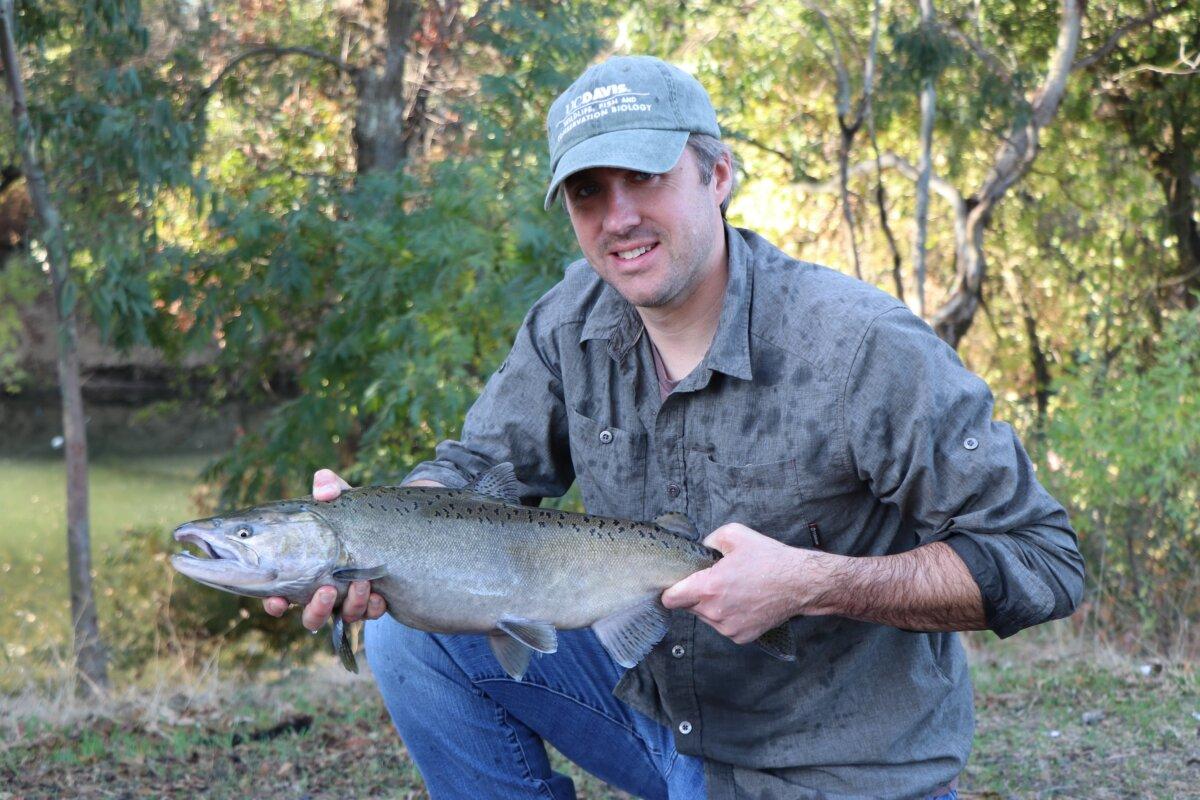Salmon Numbers Rise in Northern California Creek
The increase serves as a beacon of hope for the salmon population in California.
“Salmon have always played a vital role in the indigenous cultures of our state and across the West Coast, as well as in the lives of many Californians. … Countless individuals have grown up witnessing the salmon spawn or visiting hatcheries,” Andrew Rypel, director of the Center for Watershed Sciences and professor at UC Davis, informed The Epoch Times.
The creek originates from the Mayacamas Mountains and the Vaca Mountains, flowing down into Solano County, and is home to native coldwater fish species including chinook salmon, rainbow trout, and steelhead.
However, during the 1950s, the establishment of Lake Berryessa led to a steep decline in native fish populations, particularly anadromous species like salmon and steelhead, according to Rypel. Additionally, a prolonged drought in the 1990s caused significant portions of Putah Creek to dry up, nearly driving native fish species to extinction.
The Putah Creek Council, along with UC Davis and the city of Davis, took legal action against water agencies in Solano County and neighboring cities, accusing farmers of excessive water use and mandating reductions. Farmers contended that Monticello Dam, which created Lake Berryessa, restricted water supply during droughts, jeopardizing their livelihoods.
After a decade-long legal battle, the result was the Putah Creek Accord in 2000, which established year-round water flows to prevent the creek from drying up and to safeguard the habitat. Since then, the Solano County Water Agency, landowners, the Putah Creek Council, and various organizations have worked to restore the creek by reintroducing water to enhance flow levels. A new “streamkeeper” role was implemented to oversee and manage the creek, collaborating with students and other stakeholders to restore the waterway.
“When I arrived in Davis in 2017, a few salmon had unexpectedly begun appearing in the fall during the prior years. It was never a large number, just a handful,” Rypel noted. “Over the past eight years, I witnessed a steady increase in those numbers.”
It became evident that nearly all of those salmon were originating from local federal or state hatcheries. Typically, juvenile salmon migrate to the ocean to grow into adults and return to freshwater to spawn.
In 2017, graduate student Lauren G. Hitt and her colleagues began investigating the carcasses found along the creek to trace the origins of the salmon.
“We determined this because the hatcheries place small tags in a subset of the fish to indicate their origin. Additionally, we conducted otolith microchemistry analysis,” explained Rypel, noting that otoliths, the small ear bones of fish, assist in their equilibrium in water. “These tiny structures also form growth rings akin to trees. Thus, we can deduce their age and the chemical composition reveals their environmental history during various life stages.”
Researchers have been tracking adult chinook salmon in Lower Putah Creek weekly from October to January, performing surveys from upstream to downstream while counting both live and deceased salmon. Each carcass was documented with GPS coordinates, and researchers examined the otoliths under a stereomicroscope to assess the annual growth rings.
One significant challenge in restoring the creek and boosting the salmon population is ensuring sufficient cold water supply, which originates from Lake Berryessa but warms as it travels downstream. Within large reservoirs, cold water tends to stay at the bottom, while warmer water remains at the surface.
“I think it’s a fantastic success story about balancing the presence of salmon in the environment alongside agriculture, residents, and urban areas. To me, it truly embodies a California narrative,” remarked Rypel.
In the fall of 2024, researchers recorded a total of 735 adult salmon spawning in Putah Creek, a stark contrast to the mere handful observed in 2017.

UC Davis Professor Andrew Rypel holds an adult chinook salmon that was journeying through Putah Creek in 2023.David Ayers
Other regions are also striving to enhance the salmon population amidst ongoing water usage disputes.
Under the new provisions, water diversions would be constrained to between 50 percent and 70 percent at specific times of the year.
The Modesto Irrigation District previously informed The Epoch Times in an email that this plan would adversely affect local farmers and those relying on the water supply. It claimed that the long-term effects would include reduced affordability of locally grown produce, lower-quality drinking water, and increased pressure on disadvantaged communities.
San Francisco’s public utilities commission, which is the third-largest water supplier in California, has argued that this plan could lead to water shortages for users.
Both factions are working to strike a balance between sustaining water supplies for agricultural and urban needs while concurrently safeguarding and promoting wildlife habitats.





